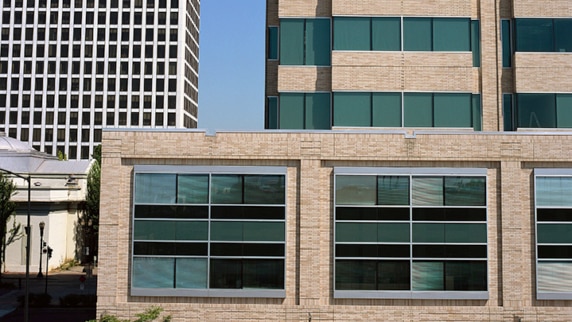
Since 2020, the legal industry has experienced a profound upheaval, driven by changes in both internal procedures and external forces. One result of these industry disruptions has been an upswing in legal malpractice claims. Lawyers and law firms not only need to navigate these industry changes, but also help protect themselves from the resulting surge in claims related to errors and omissions.
Sea change: the four sources of industry disruption
This sea change buffeting the legal profession is believed to be the result of four distinct disruptors: economic, social, structural, and technological changes. While any single disruptor can affect legal malpractice claim rates to some degree, this confluence of events has created an environment that makes errors and omissions (E&O) insurance more important than ever for legal professionals.
We’ll explore each of these current factors in more depth, as well as how these trends are likely to increase the frequency and severity of legal malpractice claims.
1. Economic uncertainties abound.
Decades of experience have taught us that economic disruption typically results in an increase in legal malpractice claims. For example, 2007-2010 gave us the worst economic downturn since the Great Depression — and resulted in a dramatic increase in claims. Clients facing financial hardship are more prone to blame their lawyers for perceived mistakes or oversights they say contributed to losses. In addition, cash-strapped clients may file suit in an effort to avoid paying attorney fees they already owe.
Economic uncertainty and financial strain can also impact law firms directly, perhaps leading them to reduce headcount or leave open roles unfilled. As workloads grow, the accompanying stress can contribute to potential errors in service delivery. Increasingly complex corporate transactions and due diligence processes can also expose the weaknesses of a short-staffed firm, as the intricate nature of these transactions, coupled with their rapid — often relentless — pace, further heightens the likelihood of mistakes.
On the other hand, law firms currently experiencing growth are likely achieving it through quick, successive mergers and acquisitions (M&A). But with acquisition can come risk, as firms take on leases and other financial obligations of the acquired businesses. The resulting financial pressure may lead some legal professionals to accept “second-tier” clients or engage in work outside their usual area of expertise, both of which are common triggers of professional liability claims.
And in response to COVID-19, wide swaths of the U.S. economy shut down and millions of Americans lost their jobs, but the infusion of $800 billion via the Paycheck Protection Program gave the economy more than a nudge toward recovery. By 2022, unemployment stood at historic lows and inflation soared, prompting the Federal Reserve Bank to raise interest rates repeatedly. Now, many economists are predicting a recession later this year.
This should raise an alarm for legal professionals. Our internal research confirms that past recessions have shown a noticeable uptick in claims filed against lawyers. We are prepared to see this trend continue, with increases in severity as well as volume.
2. Social inflation and expectations grow.
Society’s expectations of professional services, including legal services, seem to have increased. Clients now tend to demand higher standards of performance, responsiveness, accountability, and transparency from their lawyers. Any negligence or errors — real or perceived — can lead to a legal malpractice claim.
Accompanying these heightened expectations is social inflation, as judges and juries show less tolerance of alleged corporate malfeasance. Jurors focused on perceived notions of justice are issuing verdicts with payouts far surpassing historic norms. The increased financial severity of claims that go to trial affects, in turn, the rising value of claims that do not reach the courthouse.
3. New ways of working bring new risks.
COVID-19 also hastened a shift toward remote work, altering the traditional structure of firms. Three law school classes graduated during the pandemic. Some freshly minted lawyers worked remotely for a year or more without setting foot in their new firms, while lateral partners who joined new firms never entered an office. The organized bar issued multiple ethics opinions to provide guidance regarding remote practice,1 and even relatively strict jurisdictions like Florida relaxed their rules for remote legal practice.
Even as return-to-office mandates emerged, hybrid work has become a valued perk and remote practice may never be fully undone. Lawyers now collaborate with teams spread across broad geographies.
There is, however, a cost to remote practice. While workers appreciate this new flexibility, remote work can still increase the risk of errors and omissions, as firms face challenges in coordinating and communicating across decentralized teams in various locations and time zones.
Early-career associates may have less access to training and mentorship traditionally provided by partners they see each day. Senior lawyers may find themselves having to scrutinize the work of junior associates more closely, conveying feedback and advice via email or video call, rather than through spontaneous, in-person discussions.
Complex projects in particular are proving to be more difficult to manage remotely. For example, corporate merger and acquisition transactions proceeded apace during, and since, the pandemic. The looming issues of climate change, diversity, equity and inclusion, and cyber threats add new complexity to M&A transactions and can cloud an acquisition target’s true financial picture. Given the breakneck pace of such deals, remote work may contribute to oversights that could have been avoided in a traditional firm environment.
4. AI creates both solutions and problems.
Data security is of crucial importance to businesses, especially in the legal profession. The adoption of new technologies and remote work practices brings new challenges to preserving the confidentiality and security of client communications.2 As communication methods evolve, data breaches, cyber intrusions, and unauthorized access to confidential client information rise, in direct conflict with client expectations of privacy and confidentiality.
Some of these issues are unique to telecommuting. Public servers and wireless networks can be susceptible to unauthorized access. Lawyers should ensure the confidentiality and security of electronic communications in order to help protect themselves against potential malpractice claims. In particular, those working remotely should maintain vigilance over the security and integrity of their electronic devices and workspaces,3 taking steps to help mitigate any risk related to overheard conversations or stolen data.
The price for imperfect technological hygiene is high, as clients have filed malpractice suits claiming personal data was inadequately protected by their lawyers.4 Cyber intrusion remains a regular source of legal malpractice claims.
Finally, artificial intelligence (AI) seems to be everywhere today, and its applications within the legal profession could be revolutionary. It could also be disastrous for lawyers adopting AI tools without a strategy to reduce AI-inherent risks. While AI can enhance efficiency, accuracy, and accessibility, it could also trigger malpractice claims based on several scenarios.
Research tells us that poor communication is another common cause of malpractice claims.5 Each law professional has a duty to provide competent and diligent representation to clients, and the use of AI could potentially be seen as a failure to meet this duty.6 Communicating with clients via automated chatbots, for example, could engender miscommunication, and a lawyer relying on AI to perform research could face serious professional risk.
Perhaps the most interesting and unpredictable aspect of AI relates to supervisory responsibilities. Under the American Bar Association’s Model Rules of Professional Conduct (RPC), law firm partners must supervise more junior attorneys. The RPC further require lawyers to monitor and supervise nonlawyers — which could potentially include AI-powered personae.7 New York RPC expressly provide that law firms “shall ensure that the work of nonlawyers who work for the firm is adequately supervised, as appropriate.”8
How exactly these rules will apply to chatbots and other AI-assisted tools remains to be seen, but it’s clear that opportunities for miscommunication abound in this once-in-a-generation shift in technology.
Better management of E&O risks
Considering these economic, social, structural, and technological changes, legal professionals should prioritize E&O insurance coverage to help safeguard against evolving risks. The profession is undergoing unprecedented disruption, and more changes are certainly on the horizon.
Learn more about how Liberty Mutual is helping to protect legal professionals and mitigate professional risk.
1. See Jennifer Goldsmith and Barry Temkin, ABA Remote Work Guide Raises Bar for Attorney Tech Know-How, Law360, April 5, 2021, https://works.bepress.com/barry_temkin/74/
2. See Jennifer Goldsmith, David Standish and Barry Temkin, New Developments in Law Firms’ Obligations to Protect Against Data Breaches, New York Law Journal, January 15, 2021, https://works.bepress.com/barry_temkin/73/
3. See New York County Lawyers Association, Formal Opinion 754-2020, Ethical Obligations When Lawyers Work Remotely, https://www.nycla.org/resource/ethics-opinion/nycla-op-754-2020-ethical-obligations-when-lawyers-work-remotely/
4. Al Faikali, “Law Firm Data Security: The First Class Action,” Data Security Law Journal (Dec. 12, 2016).
6. Author Inquiry to Chatbot GPT, April 7, 2022, https://chat.openai.com/chat
7. ABA MRPC, https://www.americanbar.org/groups/professional_responsibility/publications/model_rules_of_professional_conduct/rule_5_3_responsibilities_regarding_nonlawyer_assistant/ [1] NY RPC 5.3, 22 NYCRR Part 1200, https://www.nycourts.gov/legacypdfs/rules/jointappellate/NY-Rules-Prof-Conduct-1200.pdf (updated 2017)
Featured insights
This website is general in nature, and is provided as a courtesy to you. Information is accurate to the best of Liberty Mutual’s knowledge, but companies and individuals should not rely on it to prevent and mitigate all risks as an explanation of coverage or benefits under an insurance policy. Consult your professional advisor regarding your particular facts and circumstance. By citing external authorities or linking to other websites, Liberty Mutual is not endorsing them.



